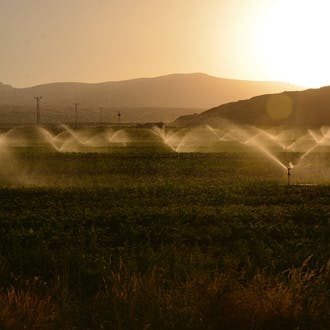
Chad Smith, NAFB News Service
The University of Illinois says climate change and a growing world population require efficient use of natural resources. The College of Agriculture, Consumer, and Environmental Sciences says water management strategies need to support worldwide changes in food consumption and dietary patterns. Agricultural production and food manufacturing account for a third of U.S. water usage, which fluctuates with weather patterns, but is also affected by shifts in production technology, supply-chain linkages, and domestic and foreign consumer demand. A comprehensive University of Illinois study looked at water withdrawals in U.S. agriculture and food production from 1995 to 2021. The main trend they saw was a decline in water use, driven by a combination of factors. The authors of the study say the industry’s use of water for irrigation decreased by 8.3 percent over that period. One trend they noted is greater demand for white meat than red meat at the nation’s grocery stores. Chicken production requires 3.5 times less water-per-pound than beef production, which means a change in demand helped livestock reduce its water use by 14 percent.
